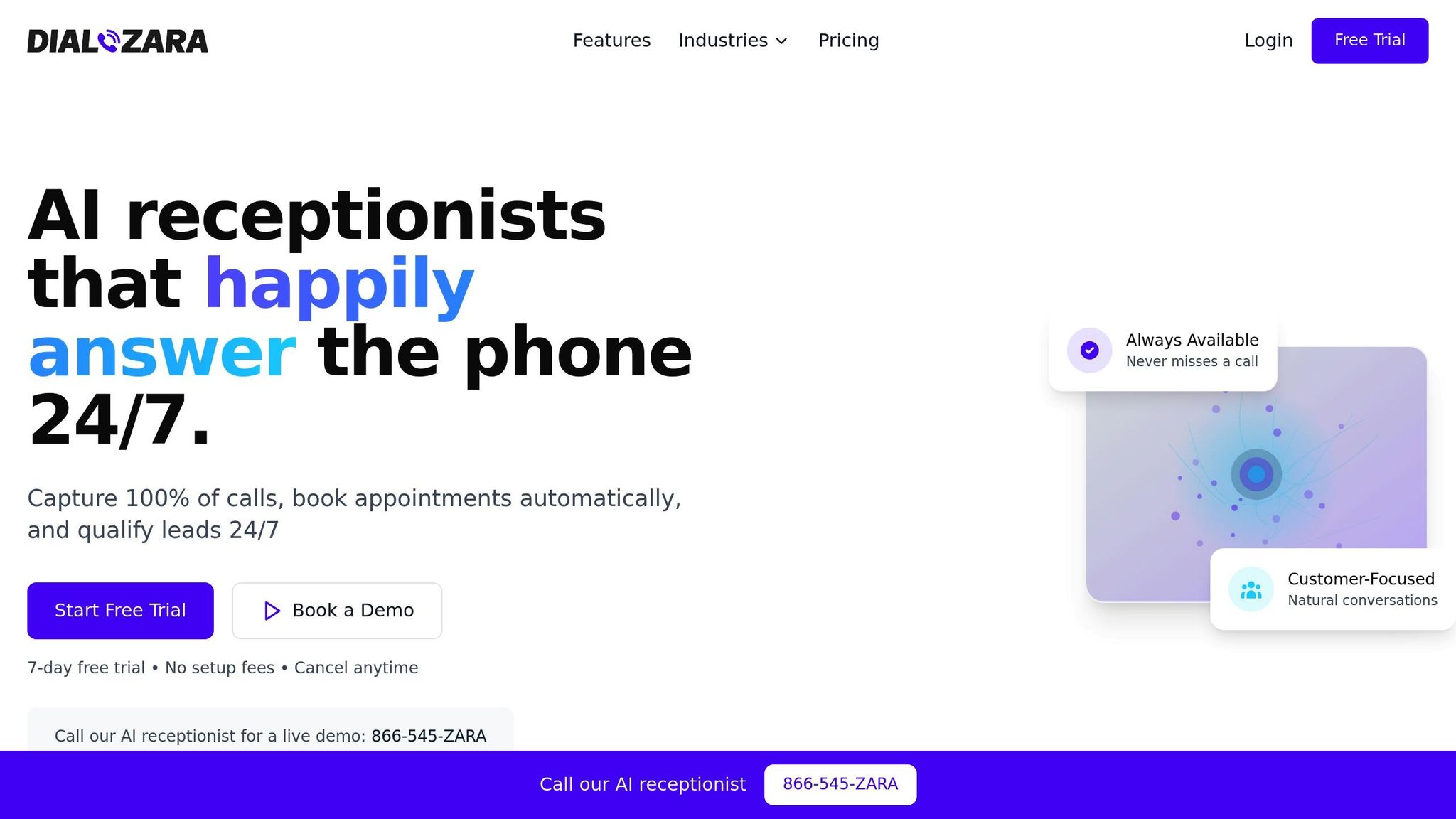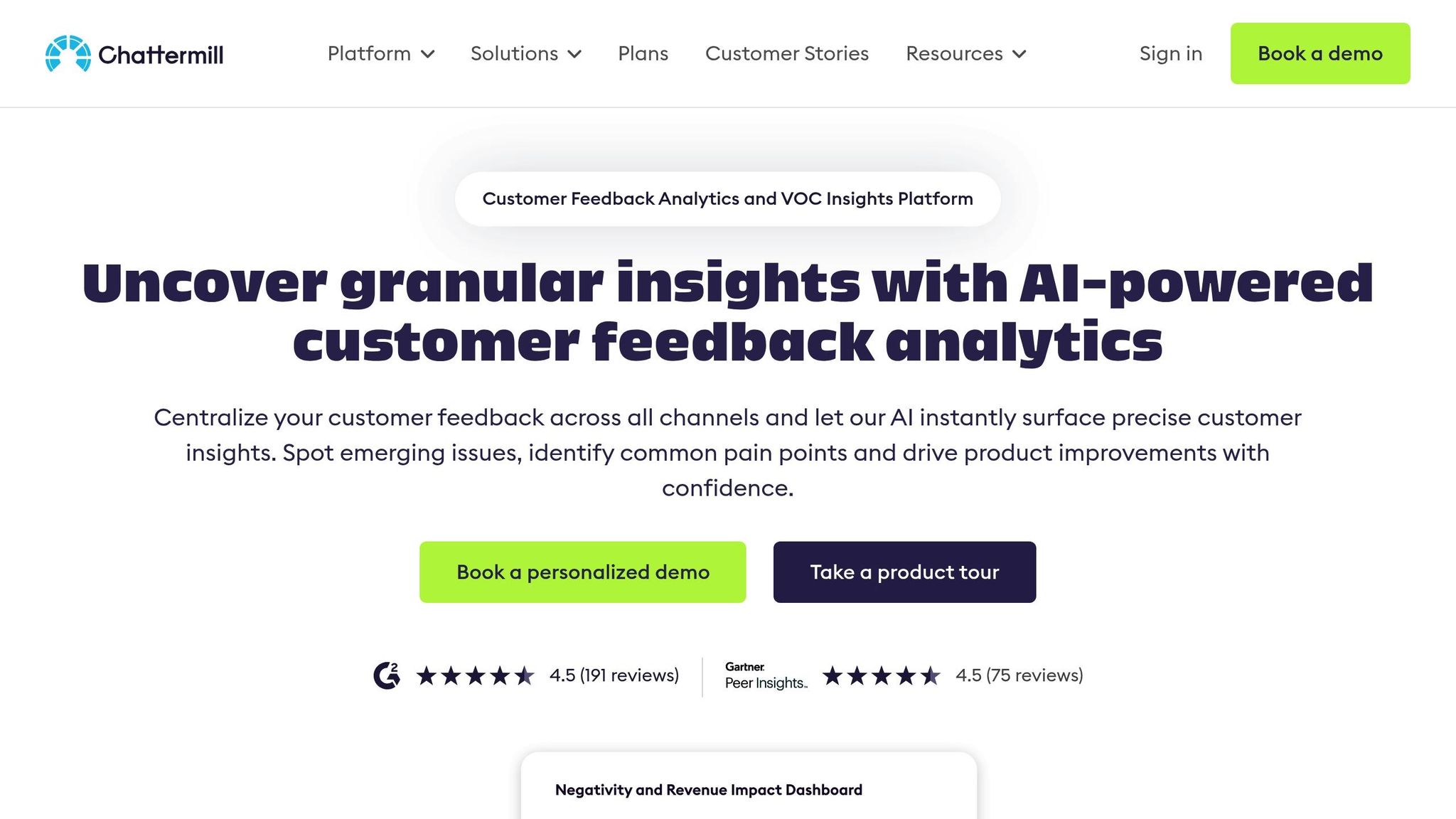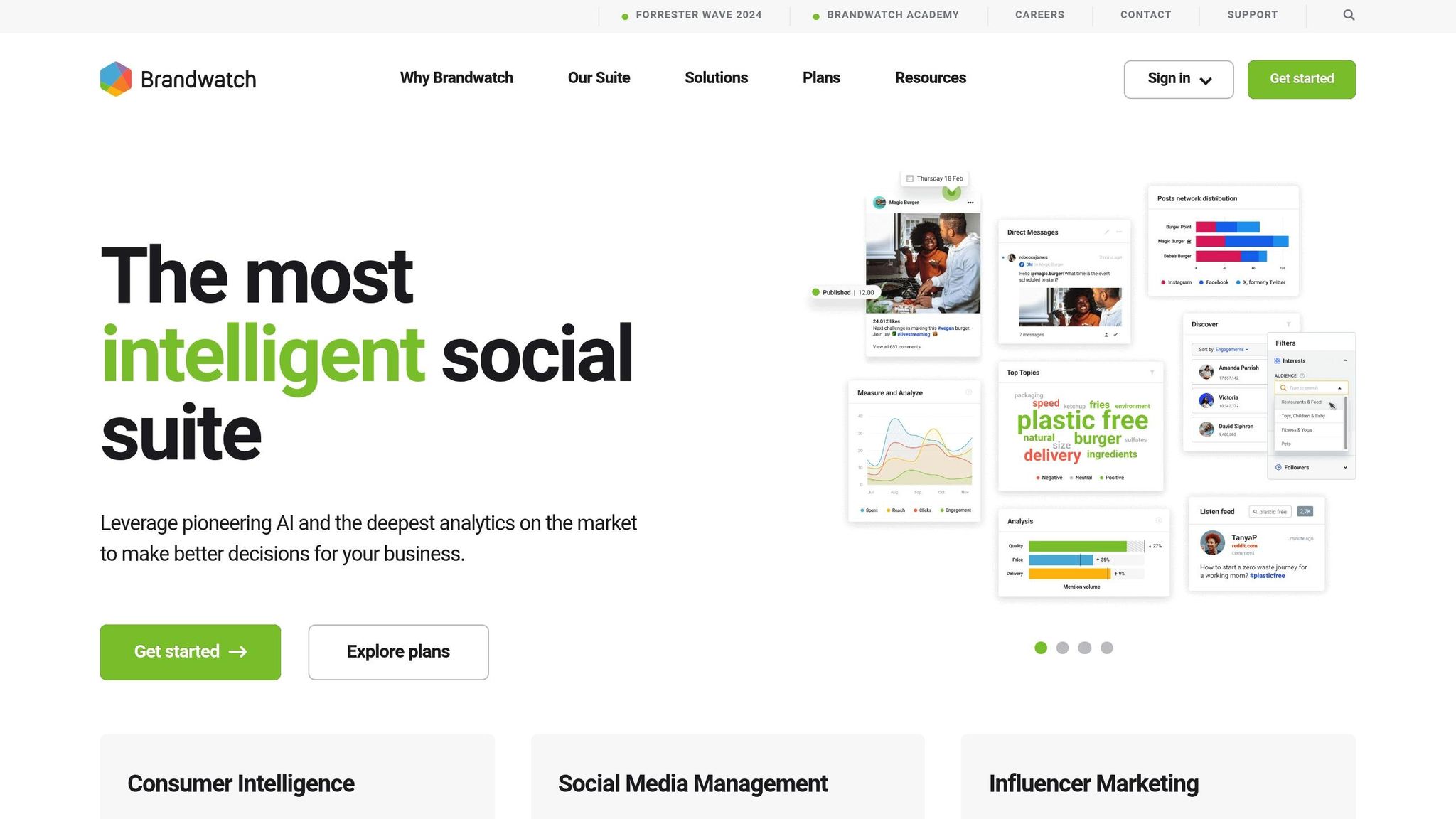
Top Tools Using Contextual Embeddings for Sentiment Analysis
Compare the best AI sentiment tools that understand context and emotion - boosting customer satisfaction by 30% over basic analyzers.

Written by
Adam Stewart
Key Points
- Choose tools with BERT embeddings for 30% better accuracy than basic models
- Monitor customer emotions in real-time to prevent issues before they escalate
- Detect subtle cues like sarcasm and mixed feelings that traditional tools miss
- Connect sentiment data to your CRM without disrupting current workflows
New ways of placing words have changed how we see feelings in text by looking at words with the words around them. Unlike old ways such as Word2Vec or GloVe, new tools use models like BERT that shift word meanings as needed, making them better at finding true emotions. This helps places that want to know what people think from talks, social posts, and written notes.
Key Points:
- New word methods make feeling checks better by reading words in use.
- Tools like Dialzara are great at spotting feelings in calls fast, while BERT tools are good with text.
- Chattermill and social media tools (like Brandwatch, Talkwalker) look at thoughts from forms, social sites, and notes.
- These tools let places work quicker, see patterns, and make talking with people better.
Fast Look:
| Tool Kind | Good For | Time to Start | Cost Range |
|---|---|---|---|
| Dialzara | Phone talks | Minutes | Less than hiring |
| BERT Tools | Text checks | Hours to days | High to run |
| Chattermill | Forms & notes | Days to weeks | Middle |
| Social Media Tools | Online brand watch | Hours | $29–$499/month |
By adding these tools to things like CRMs or help desks, places can get a deeper look into how people feel and make better choices. Pick the tool that fits your way of talking for the best use.
Top AI Tools With Smart Word Sense
Smart word sense is changing how we read feelings in text by letting tools understand how words change meaning with their setting. This way gives a truer grasp of customer feelings than old ways. Here are some top tools using these smart methods.
Dialzara: Real-Time Feel Check for Customer Calls

Dialzara is great at live feel checks during customer calls, all thanks to its use of smart word sense. It gets the special terms used in fields like law, health, real estate, and finance, giving quick feel insights to help firms act fast. With 24/7 service and links to over 5,000 business apps, Dialzara makes it simple for small and medium firms to add feel insights into their work. Setting it up is easy: answer some questions about your firm, pick a voice and phone number, set up call sending, and the AI agent is good to go.
BERT and Transformer Models
BERT (Bidirectional Encoder Representations from Transformers) and like models are core to many smart feel check tools. Not like old models that stick one meaning to words, BERT changes word meanings based on their setting. For example, in "The bank was steep", BERT sorts if "bank" means a money place or a river edge by looking at the words around. A money services firm saw a 30% boost in feel reading rightness after using BERT's smart word sense. These models can also be tuned for data from special jobs, making them even more on point for focused tasks.
Chattermill: Customer Thoughts Smart Platform

Chattermill uses smart word sense to look at customer feedback from different spots like surveys, reviews, support tickets, and social media. It sorts feedback as good, bad, or okay at once and spots common themes. Like, if many customers talk about long wait times, the tool marks this as a spot that needs work. This wide look lets groups handle lots of feedback fast - a job that would take people weeks to do.
Brandwatch and Talkwalker: Social Media Feel Tools

Brandwatch and Talkwalker use smart word sense to check feelings in social media talks, online chats, and news pieces. These tools work in many tongues and have tailorable boards that watch feel shifts over time, helping marketing teams keep an eye on brand image and check campaign wins. They also deal with casual talk, like slang and emojis, well. For example, a tweet saying "This product is fire 🔥" is rightly read as a good thing. Full reports give details like feel parts by age, place, and platform, letting firms make smart choices.
Fresh Look at Understanding Customer Feelings
Contextual embedding models give us a new way to know what customers feel, letting companies get a full idea of their emotions through feedback. These tools spot small hints that old systems often do not see.
Word Meanings Change with Use
A key thing about these models is how they read words as their use changes. Old systems keep one meaning for each word, but these models look at the whole sentence and setting to get a more true idea. Studies with the CMU-MOSI data show how words like "love" or "hate" can change a lot based on where and how they are used, with nearby hints being key to understanding.
This is really useful when checking voice calls. For example, saying "great" in a flat voice may sound like a joke or not true, but saying it with joy shows real happiness. Dialzara uses this to better listen to calls and catch these small changes well.
Seeing Hidden Emotional Hints
These models are also good at finding hidden feelings that old systems miss. They look at how language is used to spot jokes, mixed feelings, or unseen thoughts that may not be clear at first. Keeping track of these changes over time also helps, showing shifts in how a customer feels or is happy. In fact, research shows this way can even spot early signs of mental health changes. For companies, this means their service teams can deal with issues before they grow big.
Easy to Use in Business
These top features fit right into modern business tools, making sure they don't mess up what companies already do. Contextual embedding models can join right into CRM systems, help desks, and data boards. For small and medium businesses, this makes feeling data easy to get to using tools teams use already. Service people can see feeling scores as they happen, while bosses can watch trends through boards they set up, helping them make fast, smart choices when problems come up.
sbb-itb-ef0082b
Comparing Feelings Analysis Tools
Picking a tool for feelings analysis needs thinking about its skill at understanding context and how it connects with your work systems. Below is a look at some top picks based on their traits, setup, and focus.
Dialzara is good for real-time feelings checks during phone calls. It answers calls by itself and fits well with old systems, making it quick to use in areas like law, health care, home sales, and money matters. By knowing words special to each area, it shows feelings of customers fast, helping save time and effort.
BERT and transformer-based models do well in looking at text. They are better than old ways like Word2Vec or FastText because BERT makes special word forms based on context, catching small mood shifts. Its way of making close word groups makes it better at knowing and depth.
Chattermill looks at what customers say, checking info from surveys, reviews, and help tickets. By using context setups, it sees trends from many places that talk about feelings, giving a more clear view of customer feelings over time.
Tools for social media feelings like Brandwatch and Talkwalker are great for watching online talks. They keep an eye on social spots, news sites, and review pages, giving quick looks at how people see your brand.
Here's a short look at these tools:
| Tool Type | Best Used For | Main Strength | Set Up Time | Price Range |
|---|---|---|---|---|
| Dialzara | Phone calls | Checks voice as you talk | A few minutes | Much cheaper than hiring |
| BERT Models | Text correctness | Gets the text's setting | A few hours to days | A lot to run |
| Chattermill | User feedback | Looks at many sources | Some days to weeks | Not too low, not too high |
| Social Media Tools | Watching brand | Tracks online talks | Some hours | $29–$499 each month |
Working Together is key, more so for small shops. Easy fit with tech like CRMs, social media, and help desks means teams can meet customer needs fast. It's good to know, 72% of shops want to put more money into checking how customers feel.
Costs change a lot between tools. Tools for watching social media start at $29 a month for basic stuff and can reach $499 a month for big-shop needs. Dialzara, though, cuts down phone costs and makes talking to customers better with mood checking built in.
Tools like ELMo and FastText help with reading-based mood checks too. ELMo digs deep into words, but often can't match BERT. FastText is good for tough languages and rare words but can't go as deep as BERT.
At the end, what you pick depends on how you talk to your shoppers. If calls are key, Dialzara is a top pick. For shops with lots of written notes, tools based on BERT are best. Social media tools are great for watching and handling your online name.
For example, Metia, a web ad firm, used Mention to mix brand watch with their project tools. They cut down answer time by 30%. Such smart moves can really help small shops boost how they engage and please customers.
Conclusion
New types of tech have changed how small and mid-sized shops read what people feel through different ways of talking. Unlike old ways that just looked for exact words, these new tools get the deeper meaning in what people say.
By checking the words around, these tools catch small cues like jokes or the opposite meaning - things old ways often missed. For these shops, the change is clear. For example, one money services shop saw a 30% better read on feelings, helping them meet people's needs faster.
To make the most of this, picking the right tool is key. Think about how your people talk: tools that check voice in real-time are great for calls, while ones for text are better for written words. Making these tools work with your data and watching how they do can make them even better.
As these tools get better and blend smoothly into shop systems, small and mid-sized shops will soon get even better at knowing and reacting to how people feel right away. This advance gives shops smarter, sharper ways to look at feelings, making way for better ties with people.
FAQs
What should firms think about when picking a tool for checking feelings in words for their own needs?
When seeking the best feeling check tool for your company, it's key to pick ones that fit with both your work area and how you talk. Look for tools with changeable AI tech that can grasp your special work words, cover both words and emojis, and give you clear thoughts from what your customers say.
You should also look at how well the tool can spot your brand in talks, rate how happy customers are, and find feeling trends on spots like social media, email, and customer reviews. Pick a tool that fits your work goals and can expand with your needs, making sure it checks feelings right and fast as time goes on.
Summarize with AI
Related Posts
The difference between emotion and sentiment: what businesses need to know
Differences between emotion recognition and sentiment analysis explained. Learn how AI tools help businesses understand customer feelings and improve customer service. Find out the pros and cons of each tool.
Chatbot Sentiment Analysis: Complete Guide to Implementation and Optimization
Enhance chatbot interactions with sentiment analysis to understand and respond to customer emotions, improving satisfaction and efficiency.
Voice Sentiment Analysis: 7 Techniques That Help AI Understand Emotions
Explore seven key techniques in voice AI sentiment analysis that enhance customer interactions by understanding emotions in real time.
AI Sentiment Analysis for CX: Guide & Best Practices
Discover the benefits and best practices of AI sentiment analysis for enhancing customer experience. Learn how to implement and improve sentiment analysis with AI technology.
